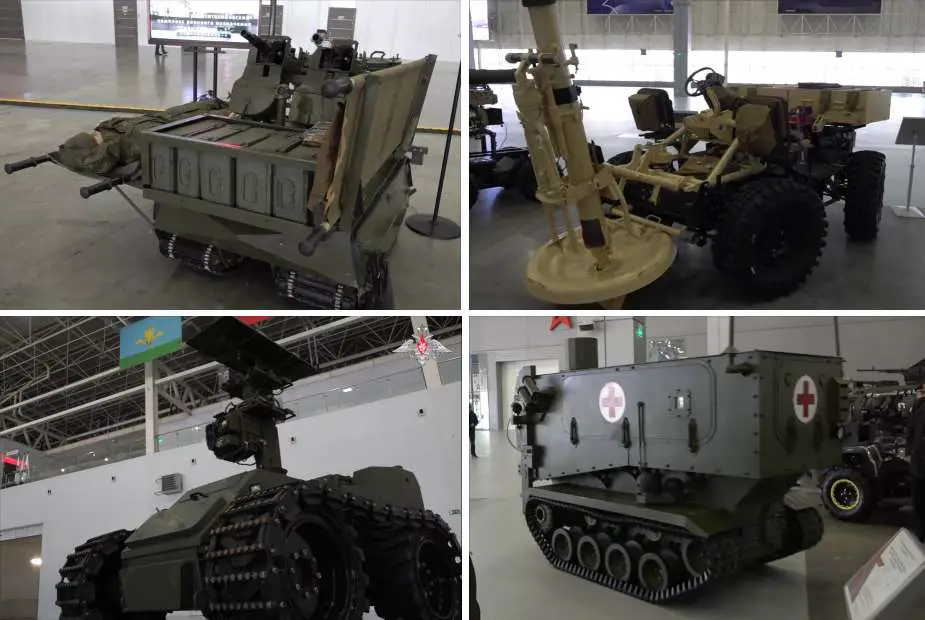Russia Develops New Ground Robotic Systems UGVs for Rapid Deployment in Ukraine
Amidst the intense conflict in Ukraine, robotic systems have emerged as vital assets on the battlefield, prompting Russian engineers to continue innovating in this new military technology. Let's take a closer look at the progress of Russia's military robotization. Several systems were showcased during an exhibition in Russia on 17 April 2024, including a UGV ambulance equipped with grenade launchers.
Follow Army Recognition on Google News at this link

Russian Defense Minister Sergei Shoigu examined over 30 samples of specialized weapons and military equipment. (Picture source: Russian MoD)
Russian Defense Minister Sergei Shoigu examined over 30 samples of specialized weapons and military equipment, with a particular focus on military robots. He emphasized the significance of a new autonomous fire support system, stressing its role in assault operations and issuing orders for its enhancement with a machine gun. Russia also showed great interest in a UGV ambulance with grenade launchers.
In May, Russian troops will receive the first 30 samples of robotic transport platforms intended for the delivery of materiel, as informed by the Russian Defense Minister. "The Defense Minister of the Russian Federation was briefed that by the end of next month, the first 30 samples will be manufactured for delivery to the troops," stated the military department.
During the event, the head of the Defense Ministry specifically ordered the immediate launch of mass production for a promising ground-based medical robotic system designed to evacuate wounded soldiers from the front line. "The urgency for this vehicle is paramount. It should be dispatched to the unit within the next few days and commence operations. There is no greater priority than preserving human life," emphasized the minister.
Another development is the "Marker" combat robot, initially designed as a versatile platform. Adapted to target and neutralize NATO-grade armored vehicles, this robotic complex has proven its effectiveness in the conflict zone. Equipped with advanced targeting capabilities, including electronic catalogs of visible and infrared spectrums, the Marker can identify and prioritize enemy military hardware with precision.
The "Sosna-N" anti-sniper system, developed by the Polyus Research Institute, detects and disrupts sniper activities with remarkable accuracy. Meanwhile, the wheeled cargo drone "Cherepakha," designed by Argo, facilitates the transport of munitions and supplies to frontline soldiers.
Furthermore, heavy automated demining systems like the "Stalker" and compact unmanned ground vehicles such as the "Scorpion" play crucial roles in demining and neutralizing explosives.
The deployment of remote-controlled sapper robots like the "Pitbull" and the "Partisan" underscores Russia's commitment to leveraging robotic technology for reconnaissance and assault missions in challenging terrain.
The family of ground-based robotic complexes Uran, including the Uran-6 and Uran-9, offers versatile solutions for demining, reconnaissance, and fire support operations. These systems, operated remotely from safe distances, enhance the capabilities of Russian military personnel in various combat scenarios.
The Russian Armed Forces' embrace of robotization comes as no surprise, especially since the rise of UGVs, UAVs, and USVs during the conflict with Ukraine. However, it remains to be seen to what extent Russia will be able to produce these new vehicles and the actual impact they will have on the battlefield.
- Hits: 5112
















